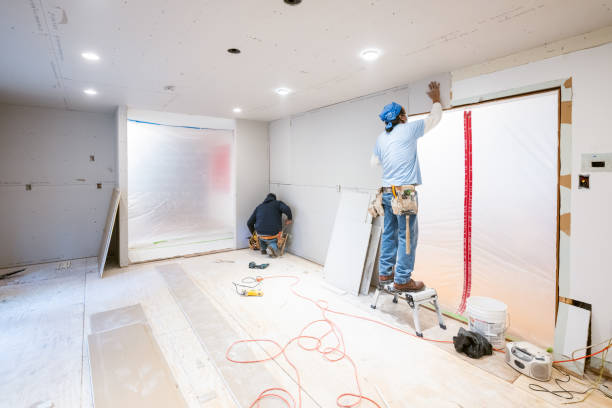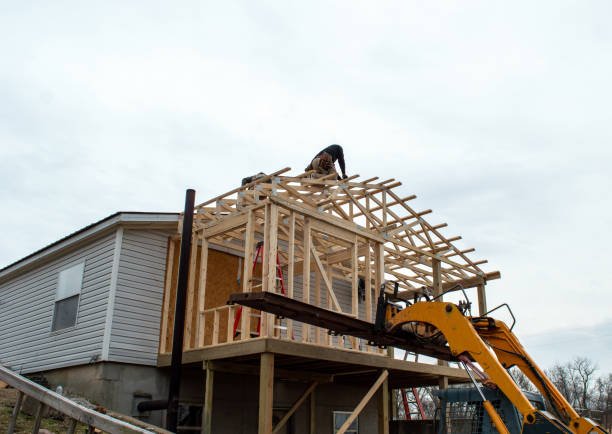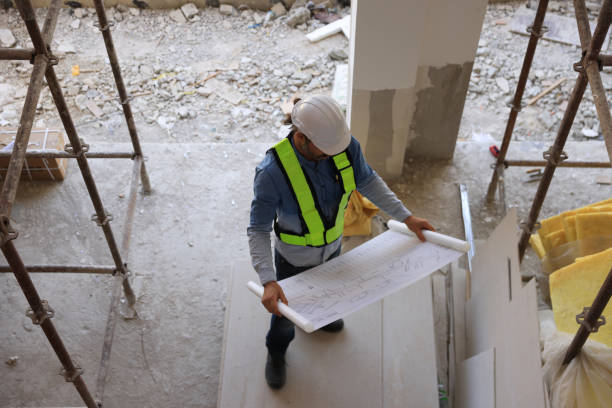
As New Zealand’s population ages, more families are choosing to adapt their homes to accommodate elderly relatives. Renovating a house for aged care not only provides a familiar and comfortable environment but also ensures safety and accessibility. These modifications help seniors maintain independence while receiving the necessary support. Whether you're planning a full renovation or smaller, strategic changes, this guide will cover key renovations for aged care, including installing electric lifts, adjusting living spaces, and incorporating essential facilities.
1. Assessing the Needs of the Elderly Resident
Before jumping into renovation plans, the first step is to assess the specific needs of the elderly person who will be living in the home. The degree of mobility, any pre-existing health conditions, and future care needs should be considered.
- Mobility: Does the individual require a walker, wheelchair, or other mobility aids? This will dictate the size of doorways, hallways, and accessible space within rooms.
- Cognitive Function: For elderly individuals with dementia or Alzheimer’s, special considerations such as secure entryways, clearly marked pathways, and simplified layouts may be necessary.
- Long-term Care Needs: Even if a senior is currently mobile and active, future-proofing the house with features like electric lifts or grab bars will save money and effort as their care needs evolve.

2. Accessibility in Key Areas
The main goal when renovating a home for aged care is to ensure that the elderly resident can easily and safely move around. This typically involves making changes to the following areas:
Entrance and Outdoor Access
The entrance to the home should be accessible, allowing easy entry and exit.
- Ramps: Install ramps with a gentle incline for those who use mobility aids. Ensure the surface is slip-resistant, especially considering New Zealand’s wet weather conditions.
- Wider Doorways: Standard doorways might be too narrow for wheelchairs or walkers. Widening them to at least 900mm (about 35 inches) allows for easy passage.
- Handrails and Grab Bars: Secure handrails should be installed along ramps and any stairs. Grab bars near doorways and steps provide additional support.
- Flat Thresholds: To avoid tripping hazards, thresholds between rooms and at entrances should be flat or have minimal elevation.
Kitchen Renovations
Kitchens are one of the most critical areas for aged care renovations, as they need to accommodate limited mobility while maintaining functionality.
- Lowered Countertops: Ensure that countertops and sinks are lowered or adjustable to allow easy access from a seated position.
- Accessible Appliances: Opt for appliances with easy-to-reach controls and user-friendly designs, such as wall-mounted ovens, front-loading dishwashers, and refrigerators with side-by-side doors.
- Pull-out Shelves and Drawers: Instead of fixed shelves, install pull-out shelves and drawers to reduce bending and reaching. A Lazy Susan in corner cabinets can also enhance accessibility.
- Non-slip Flooring: Kitchens are prone to spills, so it’s essential to install non-slip flooring materials to prevent falls.

Bathroom Renovations
Bathrooms are high-risk areas for slips and falls, so accessibility and safety are critical in renovations.
- Walk-in Showers: Traditional bathtubs can be difficult for the elderly to navigate. Installing a walk-in shower with a flat floor and non-slip tiles minimizes fall risk. A shower bench is another helpful addition.
- Grab Bars and Railings: Place grab bars near the shower, toilet, and sink. These provide crucial support for balance and standing.
- Higher Toilets: Raising the toilet height or installing a comfort-height toilet can make sitting and standing easier.
- Anti-scald Devices: Install anti-scald devices on faucets and shower-heads to prevent burns from accidentally turning the water too hot.
- Adjustable Vanity: Ensure the vanity is accessible, with space underneath for wheelchair users or adjustable heights.
Bedroom Modifications
The bedroom should provide comfort and easy accessibility, especially during the night when falls are more common.
- Electric Adjustable Beds: An electric adjustable bed allows elderly residents to easily change their sleeping position without assistance, which can be particularly useful for those with limited mobility.
- Ample Lighting: Good lighting, including motion-sensor nightlights, can help prevent nighttime falls. Use switches that are easily accessible from the bed.
- Clear Pathways: Arrange furniture to provide a clear and wide pathway to the bathroom, closet, and other parts of the room. Rugs should be secured or removed to prevent tripping.
3. Installing Electric Lifts for Multi-Level Homes
One of the most significant and beneficial additions in aged care renovations for multi-level homes is the installation of an electric lift. As navigating stairs becomes more difficult with age, lifts ensure the elderly resident can access all floors safely and without strain.

Types of Lifts
There are a few different lift options, depending on your home’s layout and the elderly person’s specific needs:
- Stair Lifts: A stair lift is a motorized chair that moves along a rail fixed to your staircase. This is a relatively simple and affordable solution for homes with traditional staircases.
- Platform Lifts: For those using wheelchairs, a platform lift provides a more practical solution. These lifts move vertically and are large enough to accommodate a wheelchair.
- Through-Floor Lifts: For homes with more space and multi-levels, a through-floor lift is installed in a shaft built between floors. This offers more versatility and can carry both people and heavy items.
Lift Installation Considerations
- Space: Ensure there is adequate space for the lift, especially in older homes with narrow staircases or tight landings.
- Power Supply: Electric lifts require a dedicated power source. It’s essential to check with an electrician to ensure your home can support the lift’s electrical requirements.
- Safety Features: Modern lifts come with a variety of safety features, such as backup power in case of an outage, seatbelts, and sensors that detect obstructions.
4. Technology and Smart Home Integration
Smart home technology can greatly enhance the quality of life for elderly residents by providing convenience and safety features.
- Voice-Activated Systems: Voice-activated assistants like Google Home or Amazon Alexa can be programmed to control lighting, adjust temperature, and even make emergency calls.
- Home Security Systems: Install home security systems with cameras and emergency alert features. This ensures the elderly person can call for help or assistance if they experience a fall or emergency.
- Remote Monitoring: For caregivers, remote monitoring systems that track movement and activity can offer peace of mind, ensuring that the elderly resident is safe.
Conclusion
Renovating your home for aged care involves careful planning to meet the current and future needs of an aging loved one. By focusing on accessibility, safety, and convenience, from installing electric lifts to modifying key living areas, you can create a space that promotes independence, comfort, and well-being for the elderly. These changes ensure the elderly resident can continue to enjoy life in a familiar and supportive environment.


















.png)
.jpg)










